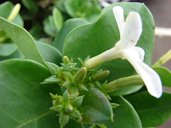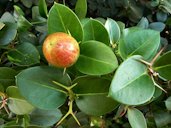| Carissa, Natal Plum - Carissa grandiflora | |||||||||||||
|---|---|---|---|---|---|---|---|---|---|---|---|---|---|
 Fig. 1   Fig. 2 Fig. 2  Cross section of a ripe fruit of a Big num-num at the TUT campus, Pretoria 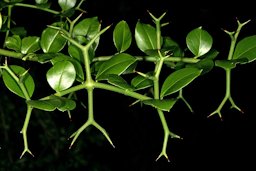 Fig. 3  C. macrocarpa, thorns; Kirstenbosch National Botanical Garden, Cape Town, Western Cape, South Africa 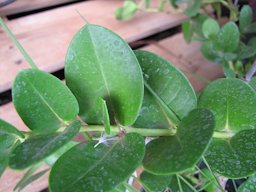 Fig. 4  C. macrocarpa (Natal plum). Leaves. KiHana Nursery Kihei, Maui, Hawai'i. 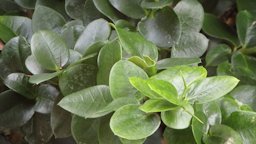 Fig. 5  New growth  Fig. 6  Stem 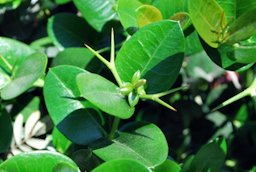 Fig. 7  Double thorns help identification  Fig. 8  Flower buds 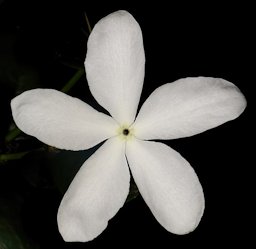 Fig. 9 C. macrocarpa, flower; Trafalgar, southern KwaZulu-Natal, South Africa 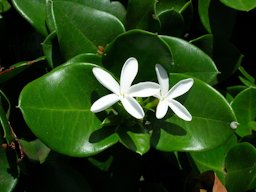 Fig. 10  C. macrocarpa flowers and leaves, Kahului Airport, Maui, Hawai'i 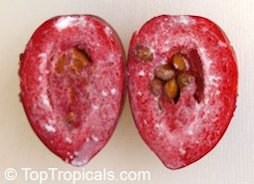 Fig. 14  Acrid latex exuding when picked unripe  Fig. 15 Carissa macrocarpa, fruit; garden in Port Edward, KwaZulu-Natal, South Africa 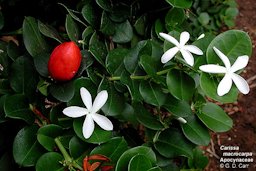 Fig. 16  Fruit, flowers and leaves 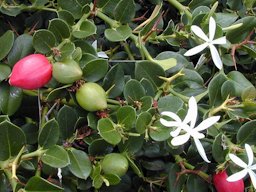 Fig. 17  C. macrocarpa (fruit and flowers), Maui, Kahului, Hawai'i 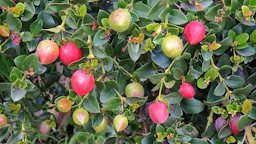 Fig. 18  Botanic Garden - African Garden, C. macrocarpa 'Tuttle' Natal-Plum  Fig. 22  Trunk is short and woody  Fig. 23  C. macrocarpa variegata (Natal plum). Flower and variegated leaves, Iao Tropical Gardens of Maui, Maui, Hawai'i. 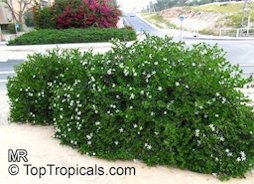 Fig. 24
Fig. 24  Natural growth habit 
Fig. 25  Box sheared, Kahului Airport, Maui, Hawai'i  Fig. 26  As a tiered tree 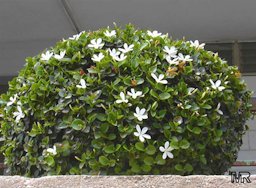 Fig. 27  As a rounded bush 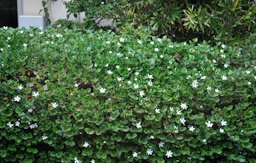 Fig. 28  Flowering hedge in Jerusalem  Fig. 29  Bonsai - C. macrocarpa 'Horizontalis', developed by Frank Okamura, Brooklyng Botanic Garden |
Scientific
name Carissa grandiflora (Eckl.) A.DC. Pronunciation kuh-RISS-uh gran-dif-FLOR-uh 7 Common names Natal plum, common carissa; outside of English: amatungulu , num-num, noem-noem 7 Synonyms C. grandiflora (E. Meyer); Arduina grandiflora, E. Mey; A. macrocarpa Ecklon 8 Relatives Karanda, C. carandas; num-num, C. bispinosa 9 Family Apocynaceae (dogbane family) Origin Native to the Northern South African province of KwaZulu/Natal 3 USDA hardiness zones 9b-11 Uses Fruit; bonsai; foundation; screen; border; mass planting; container or above-ground planter; espalier; ground cover; superior hedge 1 Height Up to 20 ft (6.1 m) 3 Spread 4-10 ft (1.2-3 m) Crown Dense and rounded, wide canopy 7 Plant habit Spreading, woody shrub with abundant white, gummy sap 6 Growth rate Moderate Trunk/bark/branches Multi trunked or clumping stems; opposite thorns on the stem that branch into two sharp points Pruning requirement It responds well to close pruning and is easily kept at any size 3 Leaves Evergreen; glossy, dark green foliage; opposite/subopposite; terminal spine; 2-4 in. (5.1-10.2 cm) 1 Flowers White, summer flowering; pleasant fragrance 1 Fruit Oval berry; red, thin skin; fleshy; 1-3 in. (2.5-7.6 cm); persists on the plant 1 Season All year, peaking Sept. through Nov. USDA Nutrient Content Light requirement Full sun to light shade Soil tolerances Clay; sand; acidic; alkaline; loam 1 Drought tolerance Moderate Aerosol salt tolerance High Soil salt tolerance High Cold tolerance Damaged at 29 ºF (-1.67 ºC) 6 Plant spacing 3-6 ft (0.9-1.8 m) centers for a hedge or mass planting, closer for the compact cultivars 1 Roots Usually not a problem 1 Invasive potential * Not a problem species (un-documented) Pest resistance Long-term health usually not affected by pests; susceptible to root rot when plants are overwatered 1 Known hazard All parts of Natal plum are poisonous except for the ripe fruits. Even the seeds within the fruits are said to be poisonous. Natal plum should not be planted close to pedestrian traffic because of its sharp spines. 3 Reading Material Carissa grandiflora Natal Plum, Common Carissa, University of Florida pdf Carissa, Fruits of Warm Climates The Carissa, Tropical Fruit News RFCI The Carissa, Manual Of Tropical And Subtropical Fruits The Natal Plum, Fairchild Tropical Botanic Garden Natal Plums Num Num, Eat the Weeds Origin Southern Africa (KwaZulu/Natal) Description The carissa is widely grown in Florida as an ornamental hedge. The plant is tough, can tolerate unfavorable conditions and will grow on barrier islands. The glossy, dark green foliage and beautiful white flowers provide visual appeal. The crimson fruit, which can be of very good quality, should not be permitted to go to waste. The carissa deserves recognition as an outstanding dual-purpose plant. 9 The various cultivars of Natal plum are among the best ocean front foundation, hedge, container and groundcover plants for tropical and subtropical regions. 3 Flowers The plant blooms most profusely in early spring, but produces a few flowers throughout the year. The flowers bloom singly or in small terminal cymes at the end of the branches. The flowers are 1 1/2 to 2 in. (30 mm-50 mm) in diameter, white and fragrant. The 5 petals are twisted to the right. 5 Some plants bear flowers that are functionally male, larger than normal and with larger anthers, and stamens much longer than the style. Functionally female flowers have stamens the same length as the style and small anthers without pollen. 6
Fig. 11. Flower buds forming Fig. 12,13. C. macrocarpa, leaves and flowers, shopping Center Pukalani, Maui, Hawai'i Fruit The fruits of the carissa (Carissa grandiflora) are oval or round and vary in size and shape. A typical fruit is approximately an inch in diameter and one and a half inches long. The skin of the fully ripe fruit is bright crimson streaked with darker red; it is thin and bruises easily. The flesh is deep red or crimson with white mottling. In the center there are approximately twelve small brown flat seeds. The fresh fruit has a mild, slightly pungent flavor, is slightly granular in texture, and is somewhat astringent. When bruised, broken, or cut, the fruit and branches exude a white latex. This substance is harmless, except that it may be irritating if it comes in contact with the eye. 2 The fruit matures in approximately 60 days, yielding most of its fruit in the summer. Carissa is not usually available in commercial markets. It is most often grown in South Florida. 2 The fruit production peaks around Thanksgiving and some people favor it over cranberries. If picked too soon, the flesh will exude very acrid white latex (Fig. 4, 21).
Fig. 19,20. Fruit (unripe) of a Big num-num at the TUT campus Fig. 21. Ripe fruit and unripe fruit showing latex Varieties Bonsai' grows in a compact mound only 2 ft (0.6 m) tall. 'Prostrata' and 'Horizontalis' (Natal creeper) are low growing cultivars suitable for ground covers. 'Boxwood Beauty' is a thornless dwarf. 'Nana' is a thornless dwarf bearing flowers with spirally overlapping petals. There are many more named selections to choose from. 3 Season While the carissa flowers and fruits all year, the peak period for blooming and fruiting is May through September. The 5-pointed calyx remains attached to the plant when the fruit is picked. 6 Harvesting The carissa must be fully ripe, dark-red and slightly soft to the touch to be eaten raw. 6 Pollination In its homeland, the carissa is pollinated by small beetles and hawk-moths and other night-flying insects. Various degrees of unfruitfulness in America has been attributed to inadequate pollination. Some seedlings are light-croppers, but others never bear at all. It has been found that unproductive plants, apparently self-infertile, will bear fruits after cross-pollination by hand. 6 Propagation By seed, expect germination in about 2 weeks, but the seedlings grow very slowly at first and are highly variable. Vegetative propagation is preferred and can be done easily by air-layering, ground-layering, or shield-budding. Cuttings root poorly unless the tip of a young branchlet is cut half-way through and left attached to the plant for 2 months. After removal and planting in sand, it will root in about 30 days. Grafting onto seedlings of the karanda (q.v.) has considerably increased fruit yield. 6 Seedlings may begin to produce fruit in 2 years; cuttings earlier. 1 Culture Along our coastal areas, carissa has been used for a hedge since it is highly salt-tolerant and can be planted in exposed locations with little chance of being damaged. One disadvantage is the shrub's large spines (Fig. 7) which are forked at the end, sometimes exceeding two inches in length. Because of its spiny nature, carissa has long been used as a privacy hedge or people-stopper, since an attempt to penetrate a hedge of carissa is rare. It should not be used in areas where small children frequent. While most people use carissa as clipped hedges forming a dense screen, it is not uncommon for it to attain a height of 20 feet at maturity. 4 Natal Plum will tolerate a variety of soils and exposures and only needs light pruning. It makes a nice, full foundation shrub. While it thrives in full sun, Natal plum can adapt to fairly heavy shade and requires only moderate watering and fertilization. 1 Pruning Only light pruning is required unless one would prefer a clipped hedge or an espalier (Fig. 25,27). Fertilizing A standard, well-balanced fertilizer suffices except on limestone where trace elements must be added. 6 Irrigation The carissa benefits from periodic irrigation, although rainfall is usually adequate to sustain the plant. 9 Food Uses The carissa must be fully ripe, dark-red and slightly soft to the touch to be eaten raw. It is enjoyed whole, without peeling or seeding, out-of-hand. Halved or quartered and seeded it is suitable for fruit salads, adding to gelatins and using as topping for cakes, puddings and ice cream. 6 The carissa may be eaten fresh but it is more enjoyable when cooked. The cooked juice and pulp have an unpleasant milky-red appearance but become an attractive bright red when cooked with sugar. The jelly has a lovely red color with a delicate, characteristic flavor suggestive of raspberry. The sauce, made by straining or sieving the stewed fruit and cooking it with sugar, is preferred by some to cranberry jelly. 2 The white latex in the fruit forms a rubbery, sticky ring around the pan in which the carissa are cooked. To remove, rub with a piece of dry paper towel or with a coarse bit of cloth soaked with salad oil. Do not use steel wool or an abrasive powder as these make the sticky substance more difficult to remove. This fruit may be used canned or frozen; as jelly or preserves; in salads, sherbets, and sauces; or as a juice for punch. 2 South Florida Tropicals: Carissa (Natal Plum), University of Florida pdf (archived) General The carissa macrocarpa is a ground cover: Carissa macrocarpa Dwarf Natal Plum, University of Florida pdf The botanical name for that family is Apocynaceae which is Greek for “keep it away from the dog” meaning it kills them easily. It does us, too. Nearly all parts of the Natal Plum are poisonous, like the Oleander, except for the red-ripe fruit. 7 Carissa comes from the Sanskrit word “corissa” the local name of one the the species. Macrocarpa is Greek for large fruit. 7 Fig. 30  Fig. 30. Carissa distribution map, wild populations Further Reading Carissa, Archives of the Rare Fruit Council of Australia Carissa Botanical Art List of Growers and Vendors |
||||||||||||
| Bibliography 1 Gilman, Edward F. "Carissa grandiflora Natal Plum, Common Carissa." Environmental Horticulture Dept., UF/IFAS Extension, FPS107, Original Pub. Oct. 1999, Revised Mar. 2023, Ask IFAS, edis.ifas.ufl.edu/publication/FP107. Accessed 3 Jan. 2015, 30 June 2023. 2 Simonne, Amy, et al. "South Florida Tropicals: Carissa (Natal Plum)." Dept. of Family, Youth and Community Sciences, UF/IFAS Extension, FCS 8522, Original Pub. July 2004, First published as SS-HEC-12, May 1993, Revised Aug. 2007, Reviewed Nov. 2010 and Nov. 2013, Ask IFAS, edis.ifas.ufl.edu. Archived. Accessed 3 Jan. 2015, 30 June 2023. 3 Christman, Steve. "Carissa macrocarpa." Floridata, Pub. 4 Dec. 2000, Updated 9 Nov. 2003, floridata.com/plant/875.Accessed 4 Jan. 2015. 4 Joyner, Gene. "Carissa." Archives of the Rare Fruit Council of Australia, June 1984, rfcarchives.org.au. Accessed 4 Jan. 2015. 5 Goebel, Roger. "Carissa." Archives of the Rare Fruit Council of Australia, RFCA Capricornia Branch, June 1984, rfcarchives.org.au. Accessed 4 Jan. 2015. 6 Fruits of Warm Climates. Julia F. Morton, Miami, 1987. 7 Deane, Green. "Natal Plums Num Num." Eat the Weeds and other things, too, www.eattheweeds.com. Accessed 14 Jan. 2015. 8 Wunderlin, R. P., et al. "Carissa macrocarpa synonyms." Atlas of Florida Plants, [S. M. Landry and K. N. Campbell (application development), USF Water Institute.] Institute for Systematic Botany, University of South Florida, Tampa, 2017, florida.plantatlas.usf.edu/Plant.aspx?id=1643. Accessed 7 Apr. 2017. 9 Boning, Charles R. Florida's Best Fruiting Plants- Native and Exotic Trees, Shrubs, and Vines. Sarasota, Pineapple Press, 2006. Photographs Fig. 1,14,21,24,26,27 MR. "Carissa macrocarpa." Top Tropicals, toptropicals.com. Accessed 4 Jan. 2015. Fig. 2 JMK. "Cross section of a ripe fruit of a Big num-num at the TUT campus, Pretoria." Wikimedia Commons, 17 Aug. 2013, (CC BY-SA 3.0), (GFDL), commons.wikimedia.org/wiki/File:Carissa_macrocarpa,_vrug_deursnit,_TUT-kampus,_e.jpg. Accessed 30 June 2023. Fig. 3 SAplants. "Carissa macrocarpa, thorns; Kirstenbosch National Botanical Garden, Cape Town, Western Cape, South Africa." Wikimedia Commons, 29 June 2005, (CC BY-SA 4.0), commons.wikimedia.org/wiki/File:Carissa_macrocarpa_1DS-II_0453.jpg. Accessed 30 June 2023. Fig. 4 Starr, Forest, and Kim. "Carissa macrocarpa (Natal plum). Leaves. KiHana Nursery Kihei, Maui, Hawai'i." Starr Environmental, 2011, (CC BY 4.0), www.starrenvironmental.com. Accessed 10 Apr. 2017. Fig. 5 Sample, Jane. "New leaf growth on Carissa macrocarpa." 2015. Fig. 6,11,22 Kwan. "Carissa macrocarpa, Natal plum." The Plant Observatory, 2009, www.natureloveyou.sg. Accessed 3 Jan. 2015. Fig. 7 Weldon, Bri. "Carissa macrocarpa." Flickr, 12 May 2011, (CC BY 2.0), www.flickr.com/photos/briweldon/5715833647/. Accessed 4 Jan. 2015. Fig. 8 Jackson, Karen. "Carissa Series." 2014, www.growables.org. Fig. 9 SAplants. "Carissa macrocarpa, flower; Trafalgar, southern KwaZulu-Natal, South Africa." Wikimedia Commons, 27 Jan. 2017, (CC BY-SA 4.0), commons.wikimedia.org/wiki/File:Carissa_macrocarpa_5Dsr_4869.jpg. Accessed 30 June 2023. Fig. 10 Starr, Forest, and Kim. "Carissa macrocarpa (Natal plum). Flowers and leaves. Kahului Airport, Maui, Hawai'i." Starr Environmental, 2006, (CC BY 4.0), www.starrenvironmental.com. Accessed 10 Apr. 2017. Fig. 12 Starr, Forest, and Kim. "Carissa macrocarpa (Natal plum). Leaves and flowers. Shopping Center Pukalani, Maui, Hawai'i." Starr Environmental, 2007, (CC BY 4.0), www.starrenvironmental.com. Accessed 7 Apr. 2017. Fig. 13 Starr, Forest, and Kim. "Carissa macrocarpa (flowers). Location: Maui, Shopping Center Pukalani." Starr Environmental, 2007, (CC BY 4.0), www.starrenvironmental.com. Accessed 7 Apr. 2017. Fig. 15 SAplants. "Carissa macrocarpa, fruit; garden in Port Edward, KwaZulu-Natal, South Africa." Wikimedia Commons, 1 June 2014, (CC BY-SA 4.0), commons.wikimedia.org/wiki/File:Carissa_macrocarpa_1DS-II_4-4954.jpg. Accessed 30 June 2023. Fig. 16 Carr, Gerald, D. "Carissa macrocarpa, Apocynaceae." Botany Dept., University of Hawai'i, Mānoa Campus Plants, botany.hawaii.edu. Accessed 3 Jan. 2015. Fig. 17 Starr, Forest, and Kim. "Carissa macrocarpa (fruit and flowers). Location: Maui, Kahului." Wikimedia Commons, 2001, (CC BY 3.0), commons.wikimedia.org. Accessed 7 Apr. 2017. Fig. 18 cultivar413. "Botanic Garden - African Garden, Carissa macrocarpa 'Tuttle' Natal-Plum." Flickr, 7 Mar. 2019, (CC BY 2.0), www/flickr.com/photos/131880272@N06/33467340318. Accessed 30 June 2023. Fig. 19,20 JMK. "Fruit of a Big num-num at the TUT campus, Pretoria." Wikimedia Commons, 2013, (CC BY-SA 3.0), commons.wikimedia.org. Accessed 7 Apr. 2017. Fig. 23 Starr, Forest, and Kim. "Carissa macrocarpa (Natal plum). Flower and variegated leaves. Iao Tropical Gardens of Maui, Maui, Hawai'i." Starr Environmental, 22 May 2012, (CC BY 4.0), www.starrenvironmental.com. Accessed 10 Apr. 2017. Fig. 25 Starr, Forest, and Kim. "Carissa macrocarpa (Natal plum). Box sheared. Kahului Airport, Maui, Hawai'i." Starr Environmental, 2006, (CC BY 4.0), www.starrenvironmental.com. Accessed 10 Apr. 2017. Fig. 28 Lazaregagnidze. "Flowering hedge in Jerusalem." Useful Tropical Plant Database, (CC BY-SA 3.0), tropical.theferns.info. Accessed 10 Apr. 2017. Fig. 29 PierreSelim. "Bonsai - Carissa macrocarpa developed by Frank Okamura, Brooklyng Botanic Garden." Wikimedia Commons, 20 July 2012, (CC BY 3.0), commons.wikimedia.org/wiki/File:BBG_-_Carissa_macrocarpa_var._Horizontalis_-_Cascade_by_Frank_Okamura.jpg. Accessed 30 June 2023. Fig. 30 Wunderlin, R. P., et al. "Species Distribution Map: Carissa macrocarpa." Atlas of Florida Vascular Plants, [S. M. Landry and K. N. Campbell (application development), USF Water Institute.] Institute for Systematic Botany, University of South Florida, Tampa, florida.plantatlas.usf.edu/Plant.aspx?id=1643. Accessed 4 Jan. 2015. * UF/IFAS Assessment of Non-native Plants in Florida's Natural Areas Published 3 Jan. 2015 LR. Last update 1 July 2023 LR |
|||||||||||||

